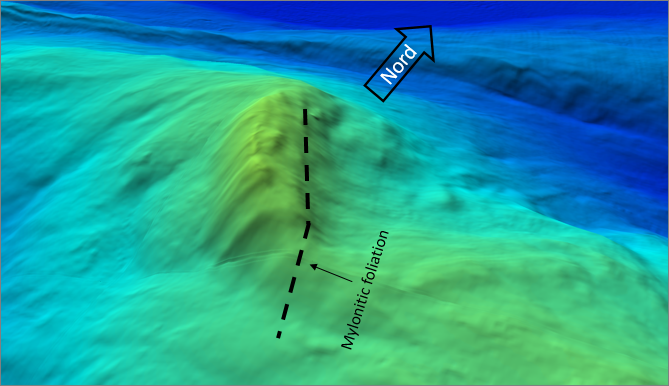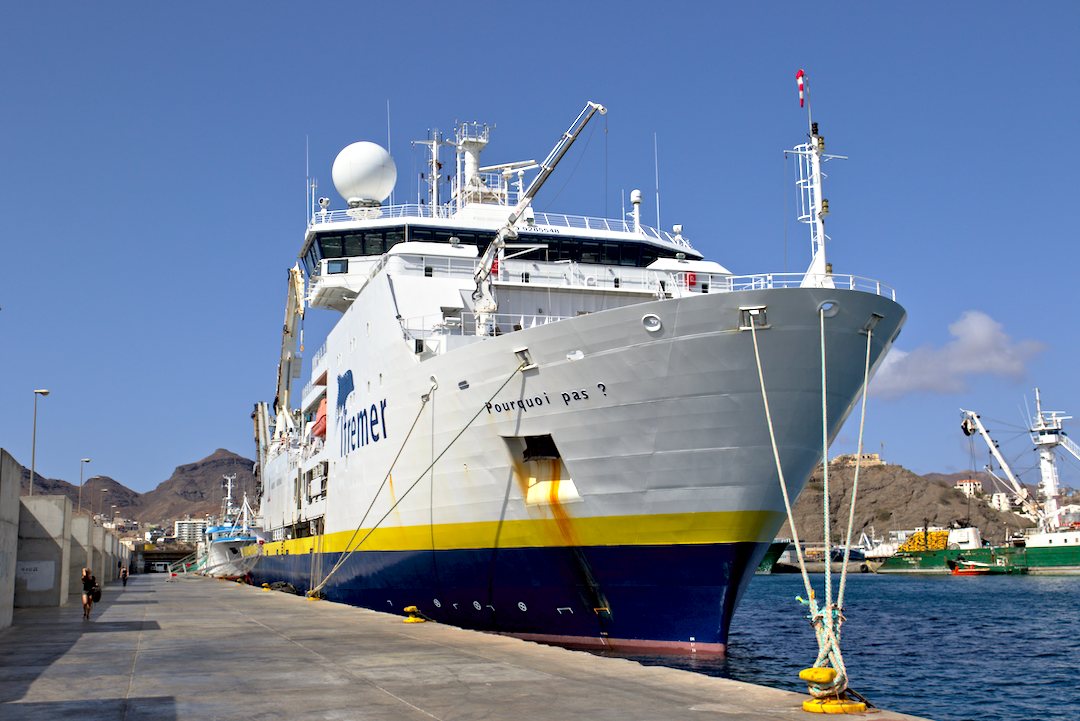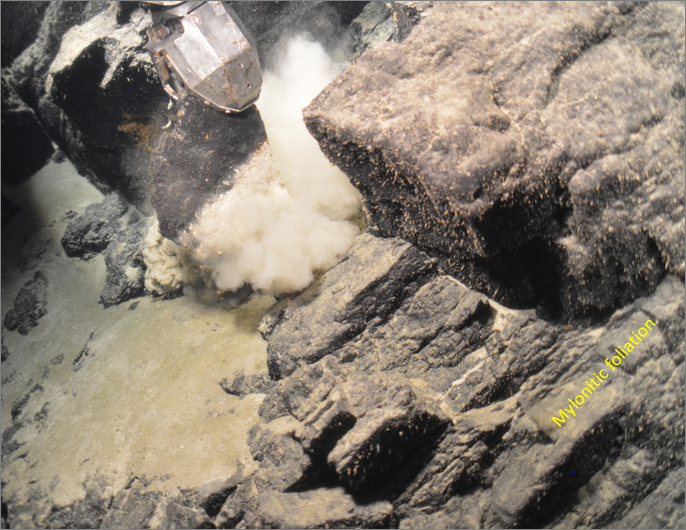The eighth Nautile dive occurred on July 28th. It has been devoted to the study of the inner part (ENE slope) of a NNW-SSE trending massif lying to the South of the transform, to the west of the ridge. The general morphology of the massif evokes a core complex (Photo. 2). The WSW slope, interpreted as the main detachment fault, was explored the day before during dive 7. The objective of dive 8 was to determine the lithological nature of the rocks making up the interior of the massif and, if any, to measure the orientation of the deformation structures (Photo 3).

Georges back from his dive. P. C. Hamelin. © Ifremer 
Photo n° 2. Topography of the old detachment with the track of the dive. © SMARTIES cruise 
Photo n° 3. Bathymetry showing the mylonitic foliation mapped by Georges. © SMARTIES cruise.
We arrived on the bottom (-4600 m) at 10H48 UT on the gently dipping foothill. We started our WNS-ESE cross section to the top of the massif, culminating at – 3900 m depth. After a while, we observed flat rocky blocks resting on the soft sediments. When not totally covered with a Mn crust, these blocks revealed their peridotitic nature and their mylonitic structure (Photo 4).
Further uphill, we reached a first outcrop where we were able to measure the azimuth and the dip of the mylonitic foliation, N150°E and 70°W respectively (Photo 5). This measurement was repeated on several outcrop all along the cross section. Accordingly, the dip of the mylonitic foliation strikes parallel to the main detachment fault but has a significantly higher dip.
The dive allowed us to confirm that the NNE-SSW stripes revealed by the high resolution bathymetric survey correspond to thick mylonitic shear zones (Photo 3). As the mylonites were less affected by serpentinization, they were more resistant to submarine erosion than the country rocks. The rest of the dive was devoted to the exploration of a narrow crest capping the plateau on its WSW flank. The sedimentary cover was thicker than expected on this steep slope and the best we could do was to grasp some erratic blocks that allowed us to confirm that the massif as a whole was essentially, maybe totally, made of highly deformed peridotite.
During this dive, the Nautile crossed the equator from North to South, which represents a quite uncommon event and a great moment for the divers! We left the bottom at 16H00 UT, at a depth of 3900 m, after a 5H15 journey of 3,7 km on the seafloor.
By G. Ceuleneer


